 |
|
 |
| Home Products Profile Send Inquiry |
|
|
||
| Trapped
roller freewheels consist of a cylindrical outer race, an inner race
with ramps and individually sprung rollers. The springs ensure that
the rollers are held in contact with the outer race and inner race
ramp, making torque transmission instantaneous. The
trapped roller freewheel can be used in 3 applications: overrunning;
backstopping; indexing |
||
| REUS | ||

|
Renold REUS series trapped Roller freewheels are non self centering. Bearing must be placed adjacent to the freewheel to ensure concentricity between inner and outer races. The
REUS series freewheels has the same outside dimensions as standard
62 series bearings. |
|
| REUF | ||
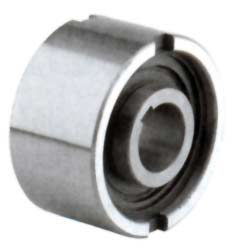 |
Renold REUF Series Trapped Roller Freewheels are non self-centering. Bearings must be placed adjacent to the freewheel to ensure concentricity between inner and outer races. Torque is transmitted to the inner race via a key and the outer race by means of either face keys or interference fit. If the face keys in the outer race are used for torque transmission the housing tolerance should be H7 to provide a press fit. If torque transmission is via interference alone, the housing tolerance should be K6. The housing must be strong enough to accept the stresses from the interference. Shaft tolerance must be h6/j6. |
|
| REGV | ||
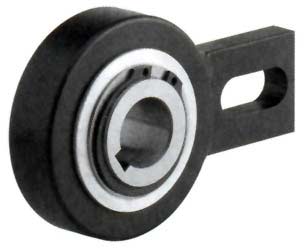 |
The Renold REGV Series Trapped Roller Freewheels are self-centering by means of plain bearings. Torque is transmitted to the inner race via a key and the outer race via the torque arm. Shaft tolerance must be h6. The primary use for the REGV freewheels is as a backstop. The freewheel should be fixed to the machine body by placing brackets on either side of the torque arm or by using a pin or bolt in the slot. Note that a clearance of 1% of slot width is needed between torque arm and brackets or slot and pin. If a bolt is used instead of a pin it must not apply any axial loads to the torque arm. |
|
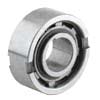

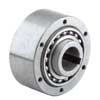
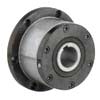
Type: REUSNU Type: REGF Type: REGL Type: REGL F2-D2(D3)
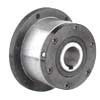
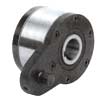
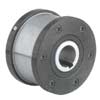
Type: REGL F4-D2 Type: REGL F5-D2 (D3) Type: REGLP F7-D7
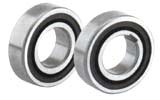
Type: REUK / REUKC / REUKCC
| Designed by |